It can be a bit of a challenge to review games that are subject to a remake. Sometimes I have a strong opinion, or on other occasions I’ve never even heard of a particular game. In some cases, I didn’t like the original game, or at the very least I risk annoying or upsetting dedicated fans by suggesting that a new take is better than the original. Where Libertalia: Winds of Galecrest (which remakes Libertalia) is concerned, I have no prior knowledge of the original, but I’m also confident enough that the new version is so different that I shouldn’t fear too much backlash.
Libertalia: Winds of Galecrest is more or less a “ground up” remake, with completely different visuals, an entirely new theme, more characters, new mechanics and rules and very different components. The core mechanics and the flow of the game have similarities, for sure, but I think it’s completely valid to say that the new ruleset plays a lot more cleanly, and arguably the character cards are more varied (there are ten more, and some are different) and balanced (some tweaks increase card strength, whilst some have been nerfed).
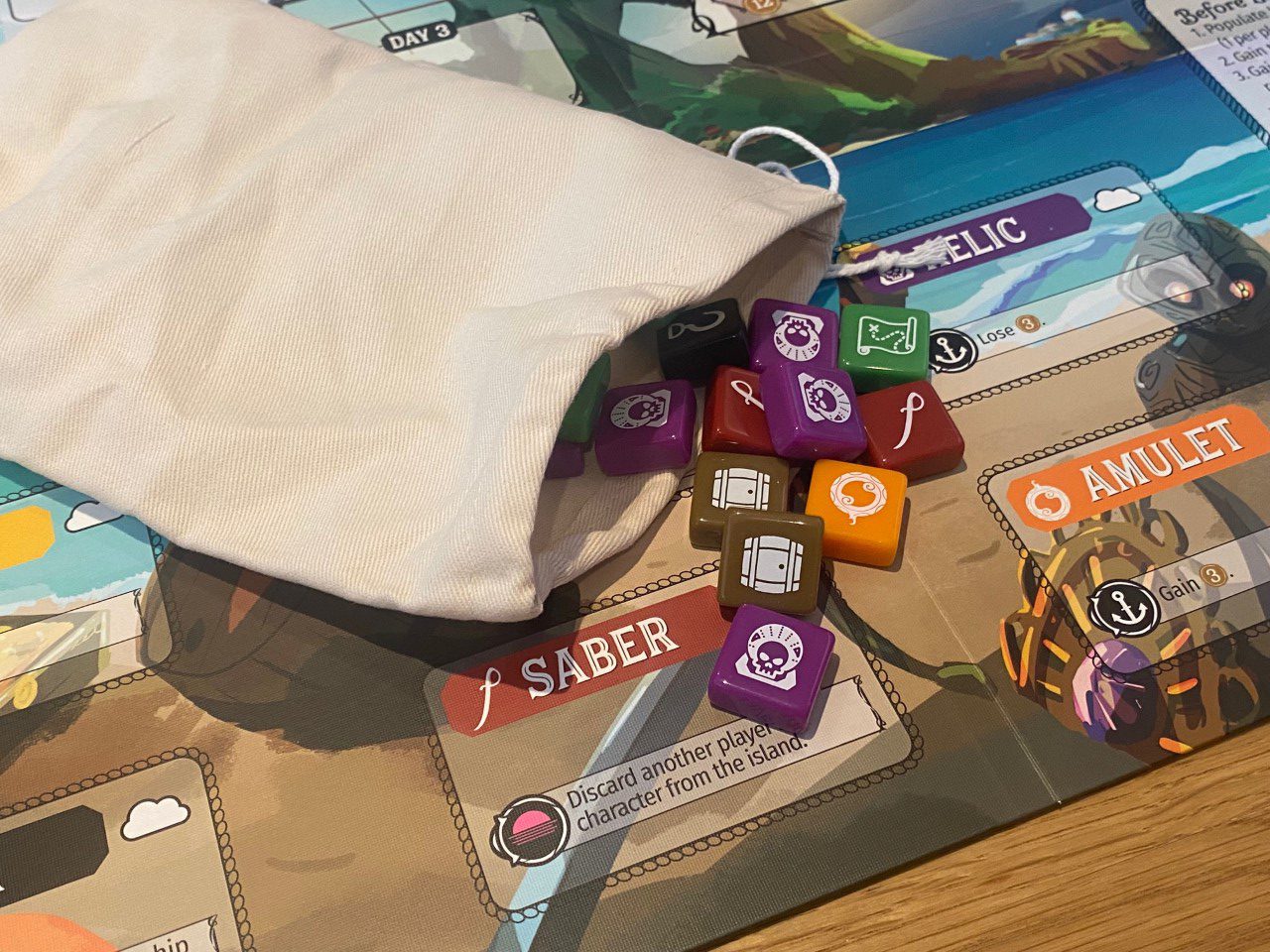
Because I haven’t played it, I’m not going to suggest whether you should consider choosing one version over the other for any particular reason, and instead I am just going to go ahead and review Libertalia: Winds of Galecrest as a standalone product — after all, you can’t get hold of Libertalia new anymore anyway. If I were to hazard an opinion about why you might prefer the older version, it would likely only be because you prefer the “realistic” art style (featuring pirates and similar) of the original, rather than the anamorphic cartoon-style of Libertalia: Winds of Galecrest.
So, jumping right in, Libertalia: Winds of Galecrest is a light to medium weight game in which each of up to six players play character cards and then use the abilities printed on them to take actions in a very particular order across three phases (Day, Dusk and Night) and spanning three separate voyages, which in turn will each have a set number of days.
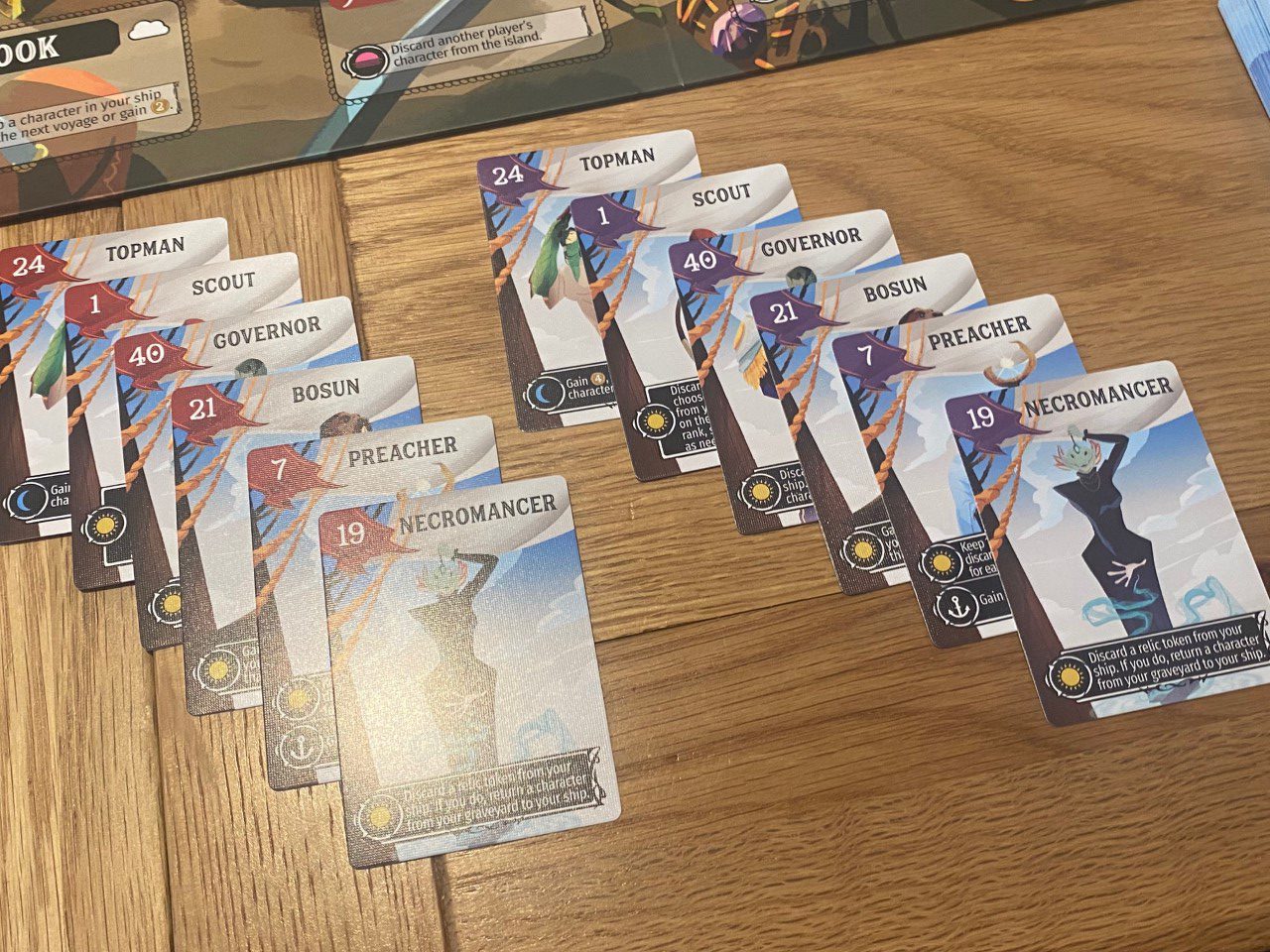
During setup, the players will draw a specific number of tokens (equal to the number of players, or three, in a two-player game) from a blind bag and place them onto the spaces representing the days of the current voyage. The first voyage spans four days, the second spans five and the third and final voyage, six days. One player then shuffles their deck of forty cards and deals themself six cards. The other players then all choose the same six cards (based on their name and number) and then everyone shuffles their deck independently.
When the game starts, everyone will review these cards and choose one to play for the first round of the game. When each player has chosen (by placing their card face down in front of them) the cards will be placed on the board in ascending order — with the lowest ranked card to the left, climbing to the highest. In a one or two player game, there are additional components to dictate how this works, but I won’t cover that in too much detail here — you should know however that both solo and two player modes here are well thought out.
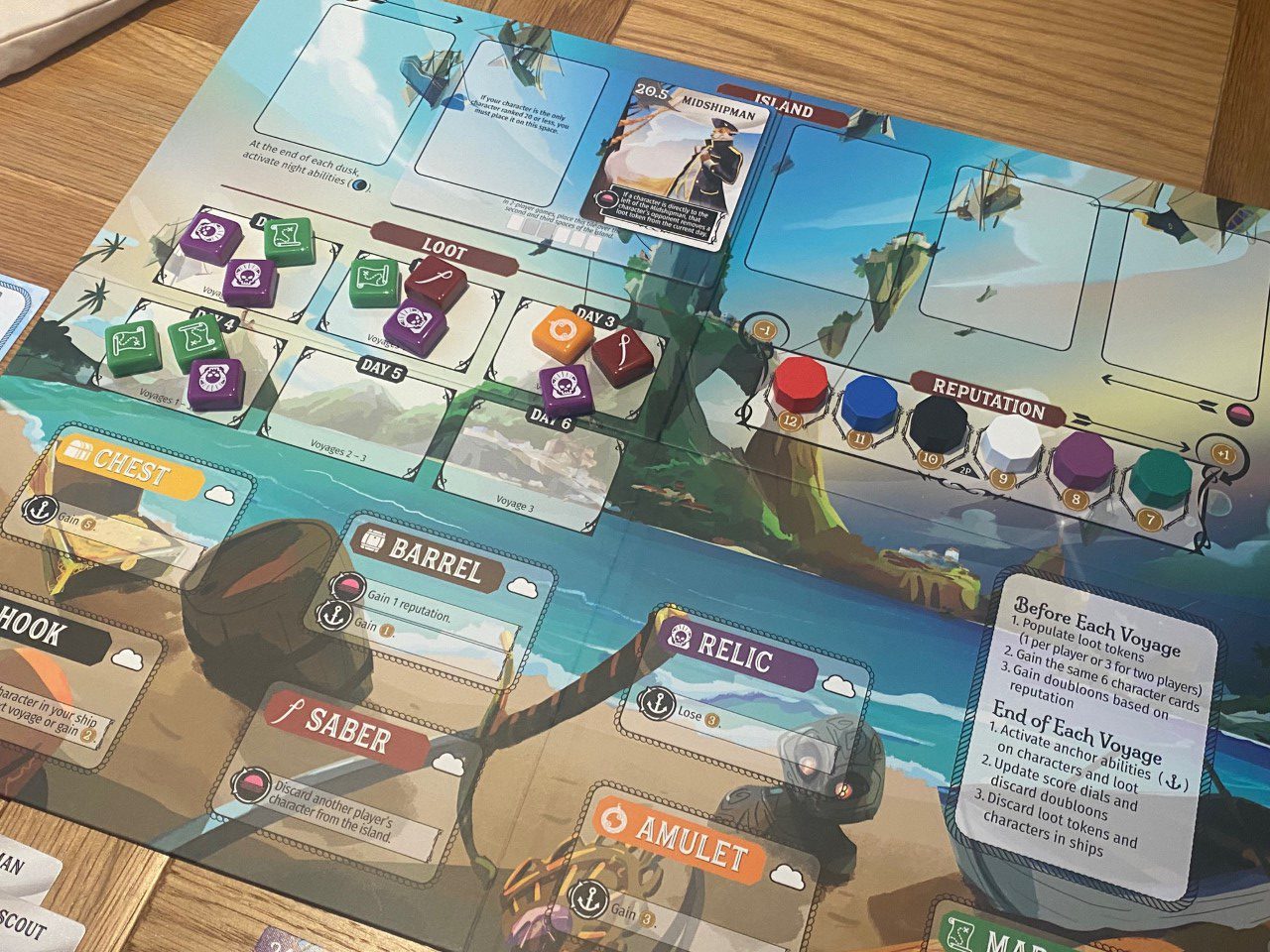
With the cards on the table and in order (any ties resolved by a reputation track which is also a new addition to Libertalia: Winds of Galecrest over the original) players will resolve the day. First, any daytime abilities (those with a sun icon) resolve from left to right — and this might include removing your own card and taking some other benefit, or it might mean having first pick of the loot placed on the day space further down the board. Some cards even remove or otherwise interfere with other player cards, which is just one of many ways in which the rank order in Libertalia: Winds of Galecrest is hugely important.
After this, you’ll perform the Dusk phase, in which each character from the rightmost to the leftmost will take a token from the display for that day — bearing in mind that some characters might have been removed or affected by other characters during the Day phase, and on some occasions, there may be no tokens left if some other effect has removed them.
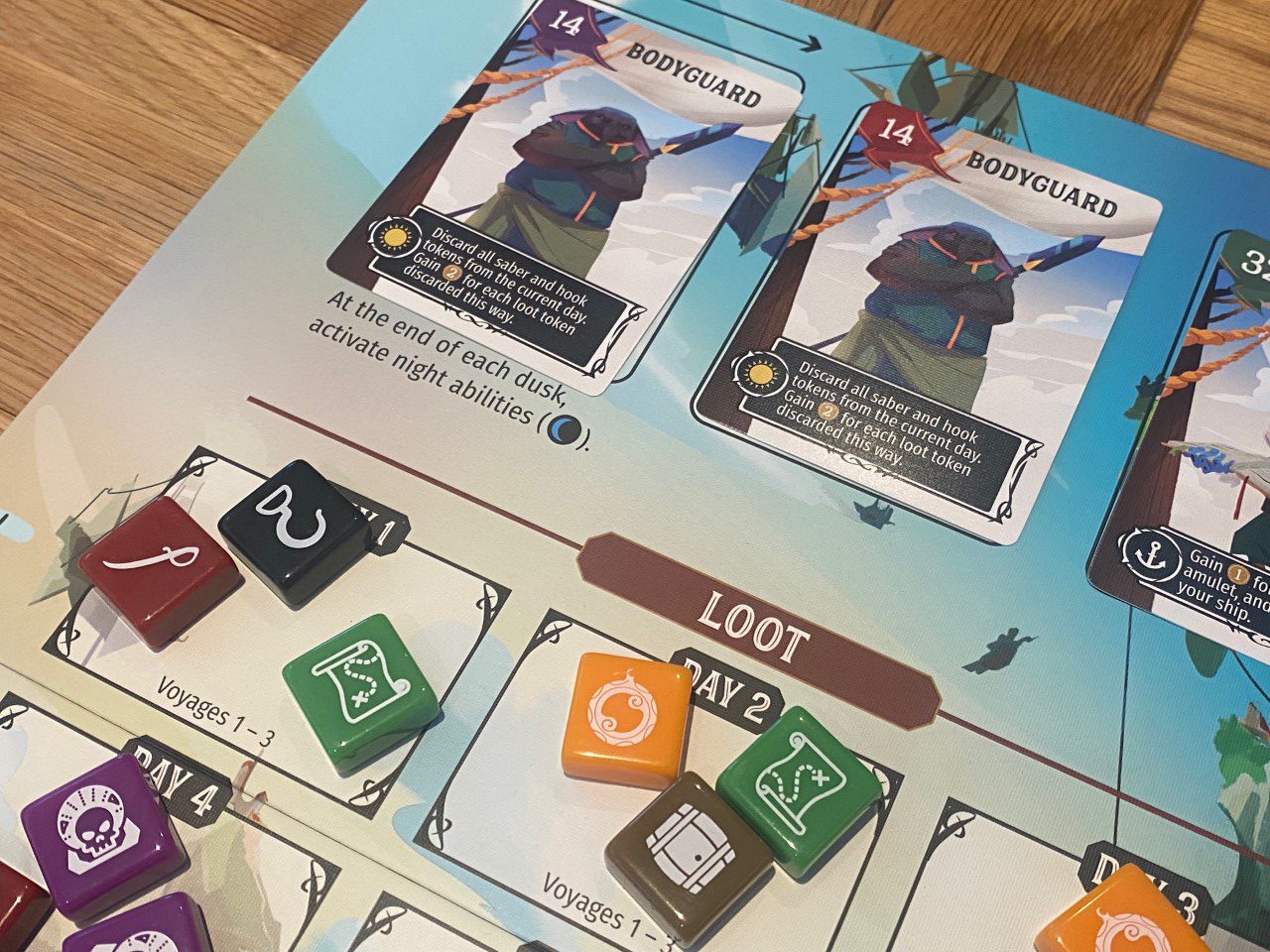
At this point, the player performing the Dusk phase will check both their character card and the token they took, and if either shows the Dusk (sundown) symbol, then the ability will activate as described. Character cards are then removed and placed in front of the player who played them, face up, and once the last character has acted, any remaining tokens (if present) will go back in the bag.
Finally, to end the current day, the players will perform the Night phase. During this phase, each player can simultaneously perform any Night actions as shown on the cards which are now in front of them. Players can choose to resolve the Night phase actions in any order they like, and in general this will allow them to gain coins or perhaps mess with their discard pile.
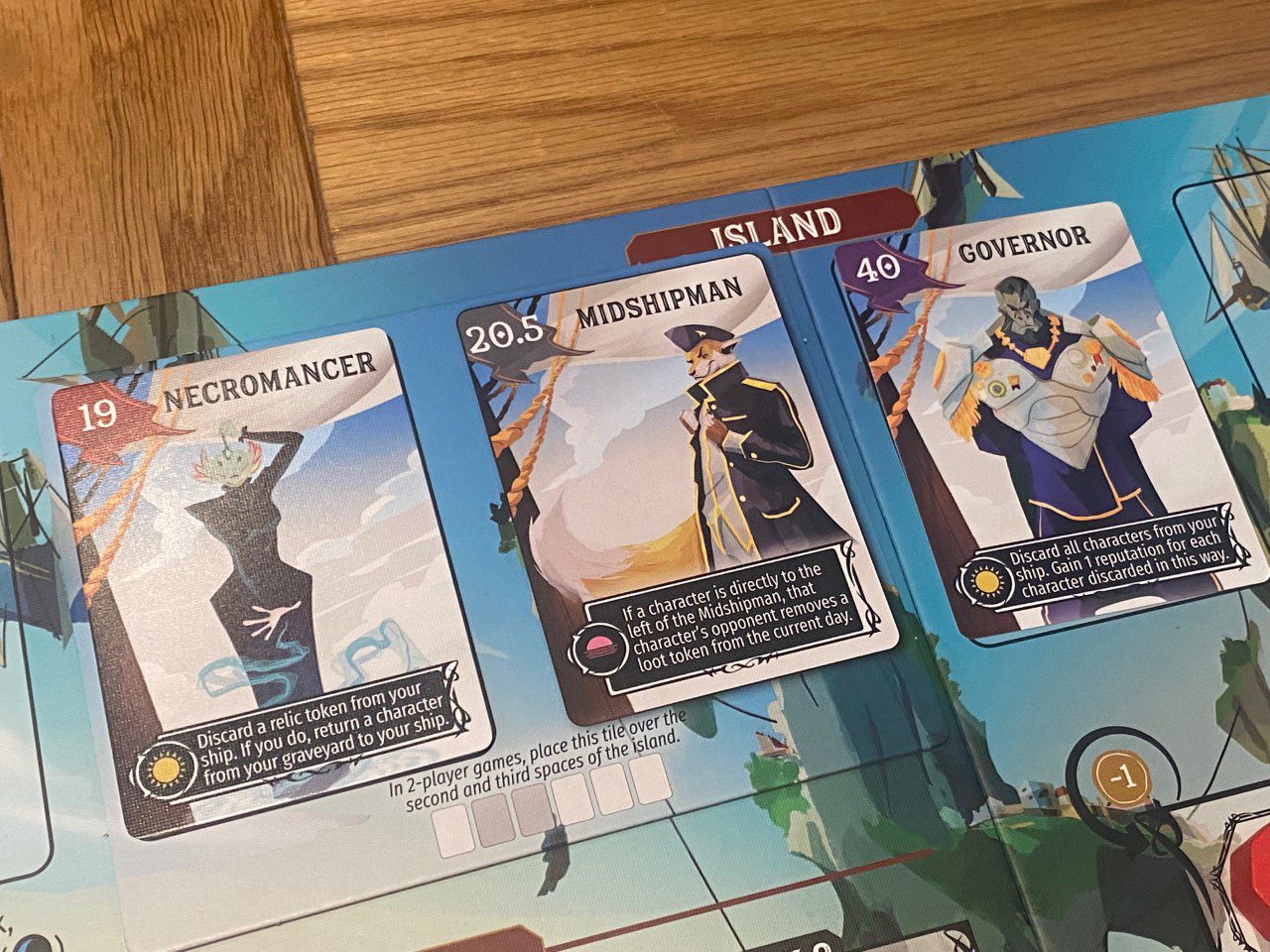
After this, the players then choose their next card to play and repeat the process until all days of the current voyage are complete. At the end of each voyage, players then resolve Anchor abilities in a similar way to Night abilities — and these can again generate coins, change reputation, bring characters back from the dead and so on. With forty cards in each deck, there are quite a few variations.
At the end of each voyage, any coins you have are added to your doubloon counter (represented by a treasure chest) and discard the coins back to the supply — these coins (in the chest) are now permanently banked, and the player with the most at the end of the game will win. Any crew members now in front of you will also be placed face down in your discard pile — effectively removing them from the game. Assuming there is another voyage to come, players then draw six cards to add to the few cards they have left, and then gain gold equal to their standing on the reputation track.
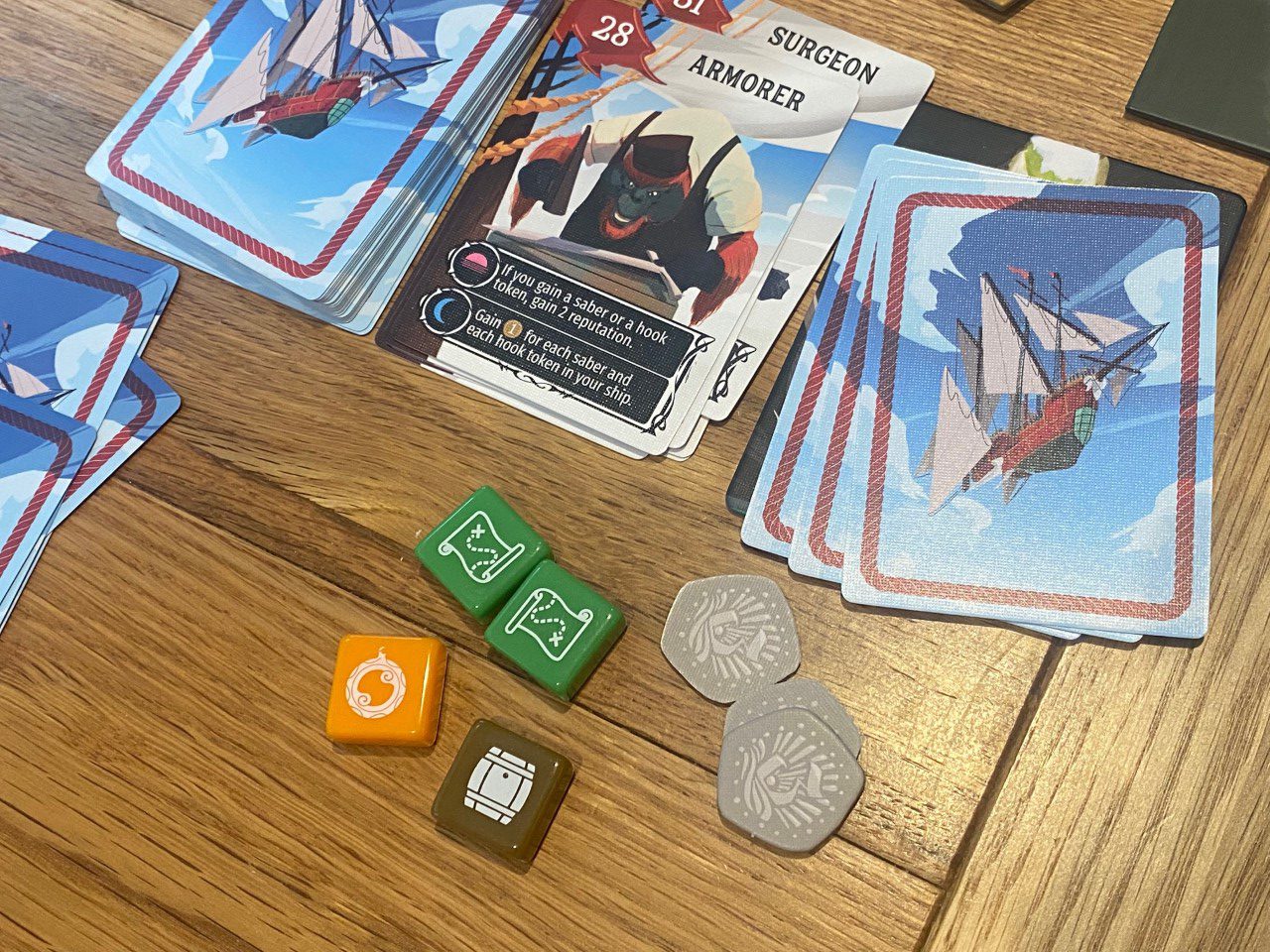
Obviously, these preparatory steps don’t need to be taken when you are finalising the third and final voyage, and instead, the game ends after the anchor abilities are resolved. The winner is the player who has the most coins banked in their treasure chest at the end of this step, with their standing on the reputation track acting as a tie-breaker.
The first thing to note about Libertalia: Winds of Galecrest is probably the art style, which as I mentioned earlier features a cartoon art style depicting semi-human/animal hybrid characters in bright, colourful scenes. The art itself is definitely good, and the only question will be whether or not it appeals to you. Honestly, I don’t love it, and some of the characters seem more or less human than others — which might just be because that’s the narrative of the game world — but overall it failed to fully immerse me into a cohesive fiction.
What I do love however is the gameplay in Libertalia: Winds of Galecrest. Beginning with the range of options; there is just so much to do here. The board is double-sided and features both a calm and a stormy side (which causes different abilities to trigger when tokens are taken) and Stonemaier Games has even included card tokens to cover the spaces on either side to create what it calls the “Uncharted Waters” variant. On that note, whilst Libertalia: Winds of Galecrest is clearly designed for three to six players, both solo and two-player variants feel well thought out and fun — increasing versatility quite a bit.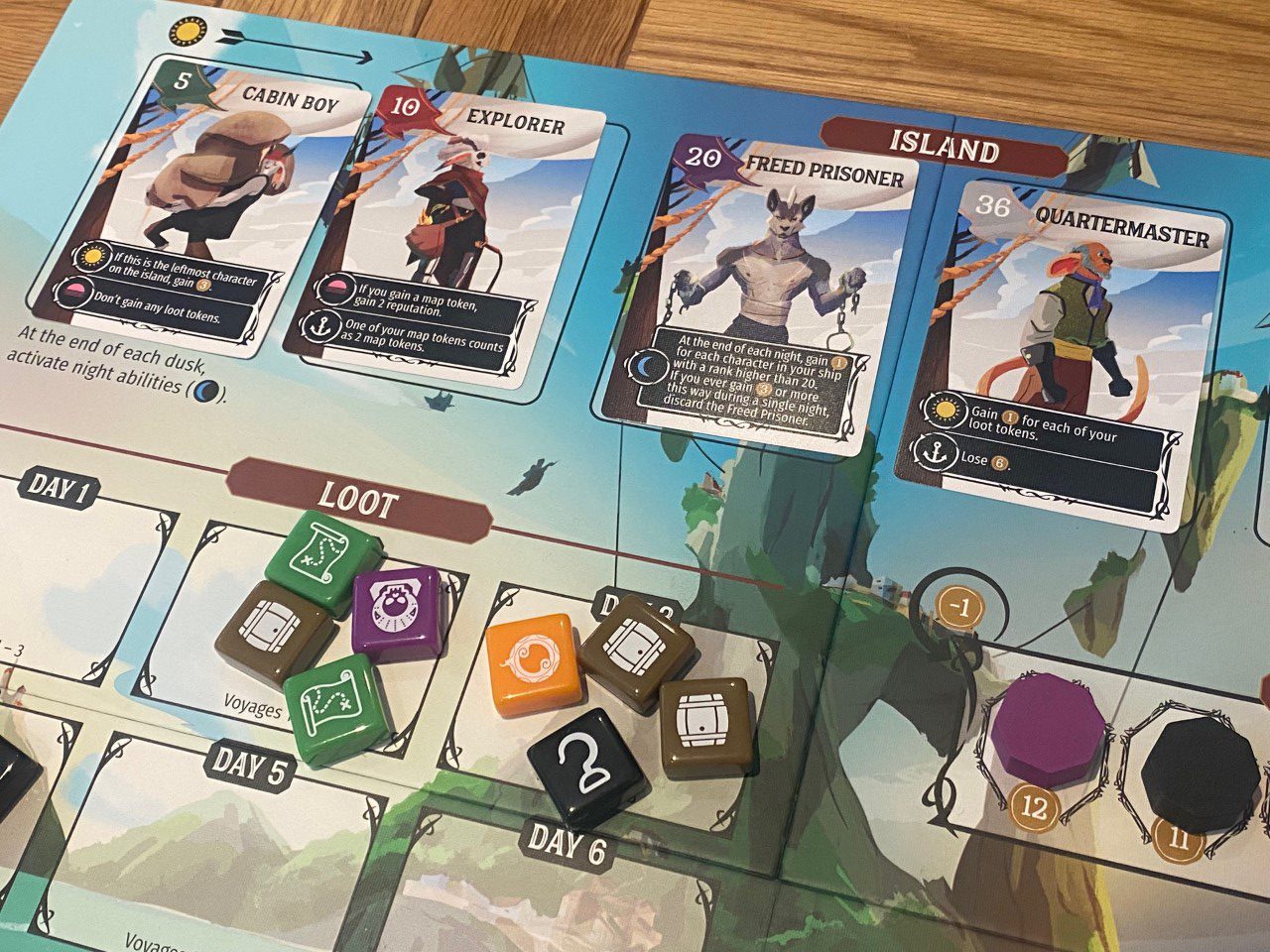
The actual gameplay is also very enjoyable, with play flowing freely enough as soon as the players adapt to the phases of a turn (which sound more cumbersome than they are). Choosing to go early or late is key, but of course to access more powerful abilities you will often have to risk going later in the resolution order. This can even lead to your character being removed or somehow affected and so there can be tremendous tension and excitement around the table.
The difference between the calm and story sides of the board (or the variable option) also offers flexibility for the needs of different groups. On the purely calm side, the players will interact with each other less, and when they do, it will be less damaging. On the stormy side, interaction and sabotage is the key focus and the feel of Libertalia: Winds of Galecrest is entirely different, even though the flow, structure and overall objective is the same.
Whilst definitely not as good at two players as it is at three (or especially four) or more, Libertalia: Winds of Galecrest is still a very comprehensive, very enjoyable package that I think appeals to both casual and experienced gamers. The art style may be slightly divisive, but it is still very striking and original, and at the very least it is unlikely to offend anyone and can simply be ignored. With these minor caveats, I have no trouble recommending Libertalia: Winds of Galecrest generally — it’s a unique and flexible experience that offers fairly deep gameplay at higher player counts, and it is fun and engaging at all counts, including solo.
You can find Libertalia: Winds of Galecrest on Amazon.
Love board games? Check out our list of the top board games we’ve reviewed.